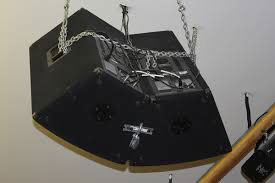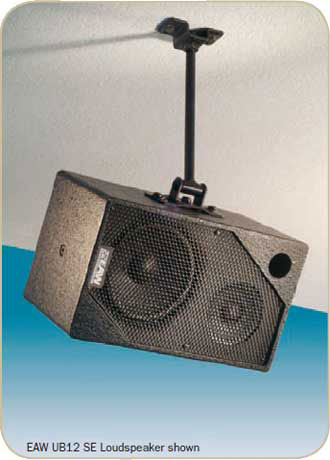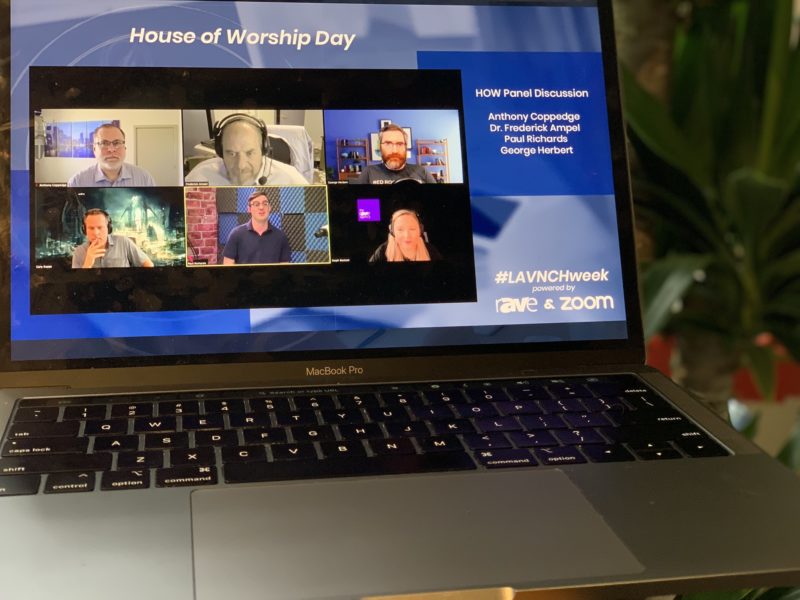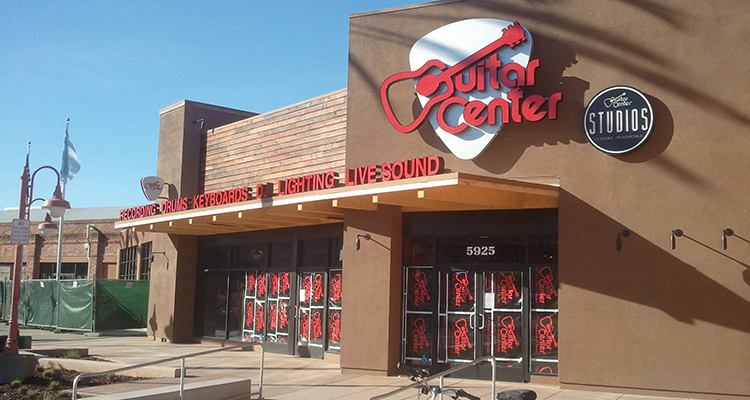Gravity
There are, within our space-time continuum, some immutable constants. For example, we can be assured that the earth will revolve on its axis every 24 or so hours and produce a sunrise and a sunset. In the sound system world, the number of absolutes is far more constrained by reality but there is one that, if ignored or misunderstood, can and has resulted in truly unfortunate results. That absolute is gravity.
Just for absolute clarity, let’s refresh everyone’s understanding of that one word: “Gravity, or gravitation, is a natural phenomenon by which all things with mass — including planets, stars, galaxies, and even light — are brought toward (or gravitate toward) one another. On Earth, gravity gives weight to objects with mass.”
The text in bold is the part that matters for our purposes. Objects have weight and loudspeakers or lighting instruments, trusses and all the other associated rigging related hardware have both substantial weight.
This is not to be taken lightly or simply noted. It is a critical factor to be cautiously considered when designing any system and especially when considering how that system might be flown or otherwise raised into space above the heads of any person in the building.
Don’t Even Think About DIY
Any regular reader of these columns knows that I strongly support the concept of using available congregational resources to help with projects, control costs and involve the community in the worship facility. Commonly referred to as using DIY capabilities, this is a valuable, useful and cost-saving arrangement that can greatly benefit many projects.
However when considering the whole subject of “rigging,” flying or hanging speakers, lighting, truss or for that matter ANYTHING DIY is not only a bad idea, but it can be a fatal mistake.
In the course of hundreds of projects across multiple decades, I have repeatedly seen things that would make any trained professional rigger run screaming from the building. Let me state this as clearly as I can:
The hardware necessary to suspend loudspeakers or anything else CANNOT BE BOUGHT AT A HARDWARE OR HOME IMPROVEMENT STORE! This is not a debatable point; it’s a fact. There are very stringent rules and regulations both in North America and most of the rest of the world on this topic. While the actual language and rules may vary the core idea does not — this is no place for guesswork or “I think I know how to do this.”
The Rules
(NOTE: The following is taken from content posted on the ESTA and OSHA websites and condensed for space and clarity. The full text of the topics mentioned is available on those websites for those who want it.)
Simply by looking at what is often considered common practice, some people working in the pro-audio/video world seem to think that the term “rigging” only applies when loudspeakers or other equipment is flown (suspended above the working area), but it also officially covers other activities such as placing a single loudspeaker on a tripod stand. The bottom line is that for any piece of production gear not sitting directly on the ground, steps must be in place to ensure that it does not fall and injure someone (or worse).
The Occupational Safety and Health Administration (OSHA), the U.S. governmental agency that sets and enforces work safety standards, states a company must have “competent” and “qualified” persons in charge of rigging. A competent person is described as one who is capable of identifying existing and predictable hazards in the surroundings, which are dangerous to employees and has authority to take prompt corrective measures to eliminate them.
Meanwhile, a qualified person is defined as one who by possession of a recognized degree, certificate or by extensive knowledge, training and experience, has successfully demonstrated the ability to solve problems relating to the subject matter and the project. Therefore, a qualified person designs a rigging system and a competent person installs and monitors the rig and inspects its components.
While OSHA rules and standards are mainly focused toward rigging in the construction industry and are geared toward the safety of employees, we also need to look after the safety of performers and members of the public who attend events.
Not everyone working in/at a facility may be at the level of a qualified or competent person (as defined legally above), but all should focus on safety. Anyone on a production crew who sees a problem with rigging (or any other safety issue, for that matter) should be able to call “stop” and point out the issue so it can be addressed and corrected to avoid an accident or injury.
And even more importantly all volunteers and part-time folks should be specifically trained to do precisely that if they see anything that looks out of place or potentially hazardous in any way. I for one would rather waste one hour finding out that whatever it was is not a problem rather than have it become a call to 911 later.
So where can you get such training and information? One excellent resource base can be found among the manufacturers who make rigging equipment or loudspeakers that fly. They provide specific safety and operating instructions for their own gear. Two organizations focused on entertainment rigging training are the ESTA Foundation and PLASA, which offers the ETCP rigging certification program for entertainment riggers who work in theaters or arenas and sets standards for for the entertainment technology industry.
ESTA, or officially, The Entertainment Services and Technology Association is a non-profit trade association based in North America with members around the world. The PLASA organization is primarily focused on the UK and Europe.
The Entertainment Technician Certification Program (ETCP) brings together a vast group of industry organizations, businesses, and subject matter experts to craft a program of rigorous assessments for professional technicians.
Because the ETCP and ESTA and the programs offered through PLASA as well) are tightly focused on the health and safety of crews, performers, and audiences, the following certifications can be obtained: Arena Riggers, Theatre Riggers, Entertainment Electricians and Portable Power Distribution Technicians.
Check the Credentials
Before you even think about suspending, flying or hanging any AV gear be sure to seek out and employs somebody with one of those certifications AND the appropriate licenses, as well as insurance required by your local codes and rules. Failure to do so is not only a bad choice, it is blatantly dangerous and from a legal standpoint could be considered depraved indifference. You do not want to be involved in any action which could result in that phrase being used. It never means anything but big trouble.
So You Think People Won’t Be Stupid?
Think again. Take a look at the following four images (via Google Images and the ESTA website).

#1 – If you plan on causing injury, do this.

#2 Never, ever use chains.

#3 Not a chance this will hold or be safe.

#4 Using a pan/tilt mount for the wrong purpose.
A special shout-out to whomever created #4 — the pan/tilt mount is rated for about 15 pounds of weight — the speaker weighs a minimum of 10 times that. Want to stand under that brilliant piece of engineering?
Safety Margins and Minimum Load Ratings
And one final point to ponder: All certified, rated and tested rigging hardware has specific load limits and safety factors that are part of the data accompanying the products. That information is not there to be ignored or thrown away. It is there because it really matters. Any professional rigging person will tell you that any suspended item needs be hung with a minimum times X load safety factor. That means, in most cases if there is a failure the remaining rigging can safely continue to hold the load until the area is made safe and or the product lowered or re-rigged.
A standard rule of thumb is a 10:1 safety margin, meaning that if you want to hang 100 pounds of something, the method used must be capable of supporting at least 1,000 pounds.
Be extremely careful when purchasing hardware and components, especially online. There are lots of fakes and illegal clones of legitimately tested and rated hardware out there. Check with a legitimate source and then shop around — if the price seems to be too good to be true, it probably is — and the product is likely a non-tested, unrated, cheap clone that will fail.
Rigging is one area in which mistakes are simply not an option — safety must be THE ONLY consideration when deciding how and what to do and whom to employ to do it.
Resources
Besides the aforementioned manufacturer sites and information, there are also several independent rigging schools that offer training and certification programs as well. A good reference book is Entertainment Rigging by Harry Donovan. While reading about proper rigging practices is highly recommended, it’s not the same as getting hands-on training. Experience along with knowledge is required for a person to be designated as competent. Both the ESTA site and the PLASA site offer links to this training as well as their own.
Always remember — there is no such thing as a non-certified rigging specialist! Anyone who would be judged legal and regulatory competent and qualified will have the appropriate training certificates, licenses and insurance. If they don’t — don’t walk away, run away. Also verify all presented licenses and certificates with the issuing organization. There have been a number of instances of fake paperwork being presented. Never assume anything when it comes to rigging safety.




